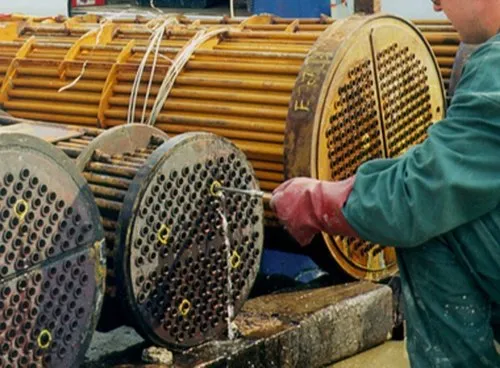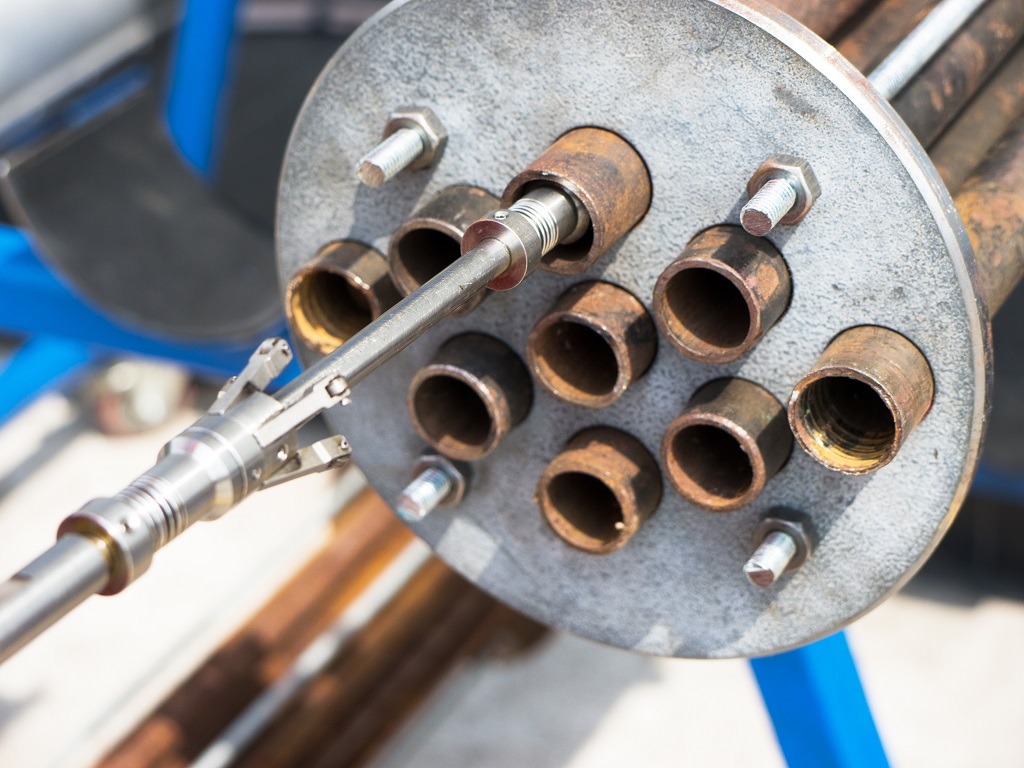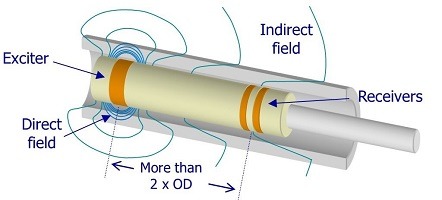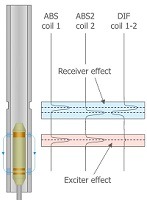When the probe moves past a defect in the tube, the response is seen in terms of two effects:
Receiver effect
- The first receiver produces a signal when it moves past the defect, and it is followed shortly after by a similar signal from the second receiver coil.
- The subtraction of both receiver signals generates the “S” shaped differential signal.
Exciter effect
- The exciter coil moves past the defect, affecting the field sensed by the receivers.
- Both receiver coils sense the exciter effect at the same time and produce almost identical signals.
- If the defect is large, the exciter can have a small effect on the differential signal because both receiver coils have a slightly different response.



